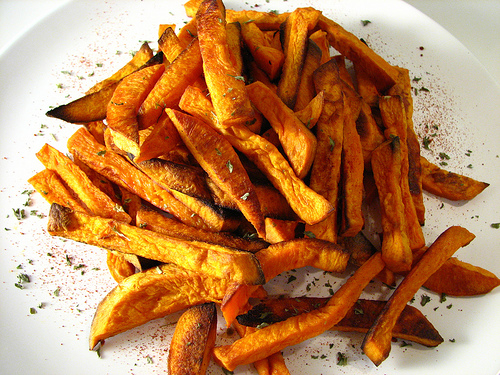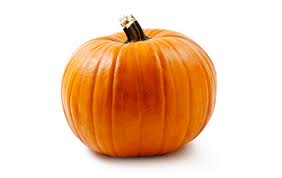Ahhh, the essence of fall.
With pumpkins lining farmers’ markets and grocery stores, and the anticipation of Halloween in the air, I attempted my go-to pumpkin muffins last week.
Mistakenly, I dumped an entire box of baking soda in the mix (don’t ask me how), and attempted to salvage it by scooping the baking soda out and continuing my recipe.
Yeah, about that…
You know those situations where you should just stop before digging an even deeper hole?
Yeah, this was one of those times…
But, I pushed through, and made three dozen pumpkin muffins, whiiiiiiich ended up in the trash a mere 12 seconds later due to a major baking soda aftertaste and a terrible review from the hubby.
Moving on from my baking failures, though, this season’s harvest is full of amazing veggies, like pumpkin, that deserve to be savored.
Last fall, I opened up my (and Kyle’s!) palate to traditionally hated on fall vegetables (i.e. brussels sprouts), and now appreciate so many other options during the cold doldrums.
To embrace all that is fall, open up your preconceived taste buds to trying these medicinal (yes, they are all high in antioxidants, vitamins, and minerals) fall foods!
5 Autumn Vegetables to “Fall” For
1. Sweet Potato – This inexpensive and delicious root vegetable is high in vitamin A, which is crucial for a healthy immune system.
Slice in half and bake at 375 degrees for 40ish minutes, and smother with butter or olive oil and cinnamon for a pie-like side dish! FYI – consuming fat with it can aid in the absorption of its vitamin A.
oil and cinnamon for a pie-like side dish! FYI – consuming fat with it can aid in the absorption of its vitamin A.
Also – try sweet potato fries! Slice in small strips and fry for 15 minutes in coconut oil and butter on the stove. Then, bake for 30 minutes at 375 degrees to create the perfect, crispy finger food.
2. Brussels Sprouts – Yes, don’t listen to the naysayers; these deserve to be on the list! Protective against cancer and  high in fiber, these green bundles, believe it or not, can create a savory dish.
high in fiber, these green bundles, believe it or not, can create a savory dish.
Try them sautéed with onions and bacon in lard, butter or olive oil. Season with apple cider vinegar, salt, fresh garlic, a dash of dijon mustard, and a handful of walnuts!
3. Butternut Squash – As a brother of the sweet potato and also very high in vitamin  A, butternut squash has just that taste: buttery, but also unassumingly sweet!
A, butternut squash has just that taste: buttery, but also unassumingly sweet!
Cut into halves and bake at 375 degrees for 40ish minutes, and then either eat plain, or try butternut squash soup!
For the soup, blend the baked flesh and pour in a large soup pot, add 1-2 cans of coconut milk, sea salt, pepper, and garlic or herbs for added flavor.
4. Fennel – Crunchy and slightly sweet, this vegetable’s high vitamin C content makes it a strong immune booster in the wake of flu season. The bulb and stalks can both be eaten, and it is traditionally an Italian vegetable.
a strong immune booster in the wake of flu season. The bulb and stalks can both be eaten, and it is traditionally an Italian vegetable.
I like to eat it raw as a snack, or slice it on top of salads.
Or, try a fennel, cabbage, carrot slaw found here, by chopping each finely, and stirring in olive oil, lemon juice, coriander, salt and pepper!
5. Pumpkin – Yes, I will attempt cooking this again after my fail last week. And beyond just carving it for Halloween, pumpkin is so savory, and a great addition to a fall meal.
Try these pumpkin banana raisin muffins and this amazing pumpkin pie recipe that we had at last year’s Thanksgiving!
recipe that we had at last year’s Thanksgiving!
Also, don’t forget to bake the pumpkin seeds! Scoop them out of the flesh, sprinkle with olive oil, salt and garlic, and bake for a great football snack!
Don’t get stuck with the boring, conventional, grocery store vegetables supplied year-round!!
FYI, although delicious and available, eating non-seasonal produce like cucumbers and berries involves a hefty fossil fuel price at an average 1,500 miles to get to your plate.
Step outside your comfort zone, find a farmer’s market or a local health food store that carries seasonal produce, and spice up your nutrition and your recipes!

